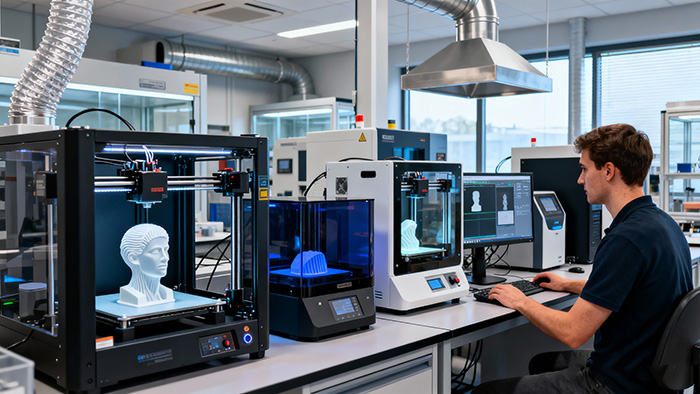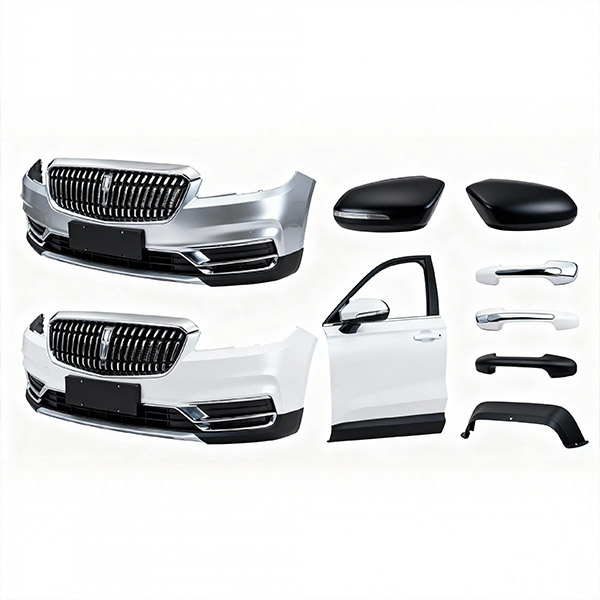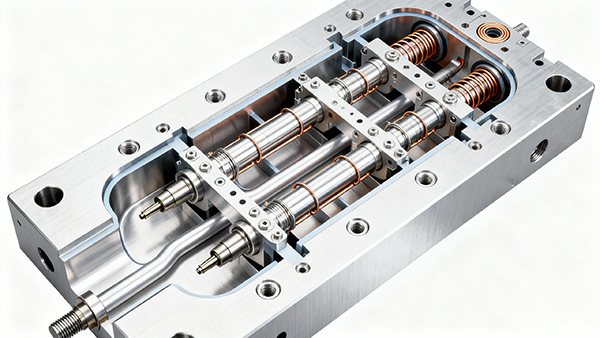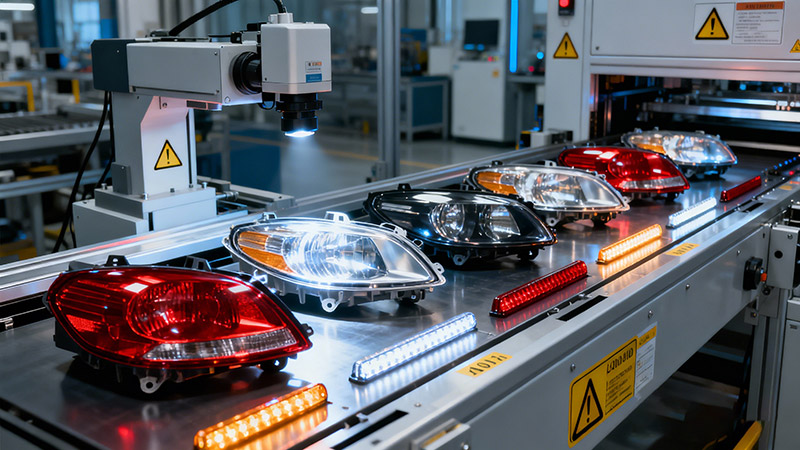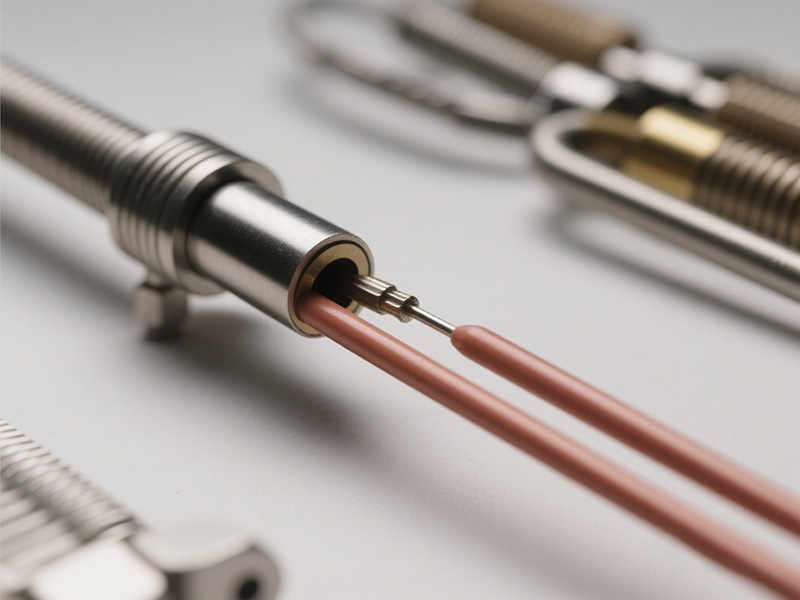IntroductionWhen choosing a plastic manufacturing process, materials and performance often matt...
Plastic Injection Molding: An Overview
Injection molding is a manufacturing process in which plastic (or other material) is melted and injected into a metal mold to form parts. In this process, raw plastic pellets are fed into a machine, heated until they are molten, and then forced into a closed mold cavity under high pressure. After cooling, the mold is opened and the solidified plastic part is ejected Injection molding is widely used to make a huge range of products – from tiny components like gears and combs to large items like automotive panels. It is popular because, once a mold is made, the machine can quickly produce high volumes of identical plastic parts at relatively low costIndustries from automotive and electronics to household goods and medical devices rely on injection-molded parts.
Injection Molding Machine Components
Injection molding machines have two main sections: the injection unit and the clamping unit. The injection unit (see photo below) consists of:Hopper: a large funnel at the top that holds and feeds the plastic pellets (raw material) into the machine.
Barrel and Screw: a heated metal cylinder (the barrel) contains a long screw. When the machine runs, the screw rotates and moves forward. This both mixes and melts the plastic pellets by friction and heat.
Nozzle: the front end of the barrel, through which the molten plastic is squeezed into the mold.
Meanwhile, the clamping unit holds the mold itself. The mold is typically made of two precision-machined metal halves (the cavity and core). The clamping unit presses these halves tightly together during injection. High clamping force (measured in tons) keeps the mold shut against the pressure of the injected plastic. After the plastic cools, the clamping unit opens the mold and uses ejector pins or plates to push the finished part out.
Figure: Injection molding machines in a factory. The tall metal hoppers on top feed plastic pellets into the heated barrel (gray cylinders) below. The control panels (right) operate the injection and clamping units.

In summary, key components are: the hopper (for feeding pellets), the heated barrel & screw (for melting and injection), the mold (two halves shaping the part), and the clamping unit (holding the mold closed and ejecting the part).
Injection Molding Process Steps
Injection molding works in a repeating cycle of steps. The simplified diagram below illustrates the process: plastic pellets enter the hopper, melt in the barrel, and are injected into the mold. After cooling, the part is ejected and the cycle repeats.
Figure: Simplified injection molding process. ① Plastic pellets are fed from the hopper into the heated barrel. ② A rotating screw melts and pushes the molten plastic forward. ③ The molten plastic is injected into the mold cavity. ④ The plastic cools and solidifies in the mold. ⑤ The mold opens and the finished part is ejected.
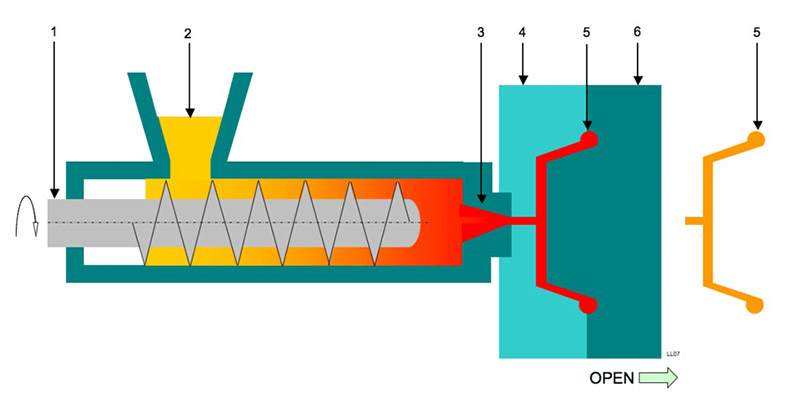
The main steps are:
Material Feeding: Plastic pellets are poured into the hopper. They fall into the heated barrel beneath the hopper.
Melting: Inside the barrel, the screw rotates and pushes the pellets forward. Heater bands around the barrel melt the plastic. The rotating screw ensures the plastic melts evenly and becomes a uniform molten mixture.
Injection: With the mold closed and clamped shut, the screw acts like a plunger and shoots the molten plastic through the nozzle into the mold cavity at high pressure. This pressure forces the plastic to fill every detail of the mold.
Cooling: The plastic inside the mold cools and solidifies into the shape of the cavity. (Molds often have water or oil channels to speed cooling.)
Ejection: After the plastic hardens, the mold halves open and ejector pins push the finished part out of the mold. Any excess plastic (sprues or runners) is trimmed off. The mold then closes and the cycle begins again.
This cycle typically takes seconds to a few minutes, depending on the part size and material. Injection times can be very fast (often under a second) and cooling times depend on how thick the part is.
Common Plastics and Applications
Most injection-molded parts use thermoplastics – plastics that melt when heated and harden when cooled. Common thermoplastic materials include polyethylene (PE), polypropylene (PP), polystyrene (PS), polyvinyl chloride (PVC), polyethylene terephthalate (PET) and polycarbonate (PC). Other popular plastics are acrylonitrile butadiene styrene (ABS), nylon (polyamide), acrylic (PMMA) and acetal, chosen for their strength, flexibility or chemical resistance. (Some injection molding also uses thermosetting plastics like epoxy or phenolic resins, especially for parts requiring high heat resistance.)
Because injection molding can produce detailed and complex shapes at high volume, it is used in many industries. Typical products made by injection molding include:
Automotive parts: dashboards, bumpers, clips, knobs, and interior panels. (Entire body panels can be molded.)
Consumer and household goods: plastic bottles, caps and containers; toys (e.g. LEGO bricks); kitchen utensils; appliances; and durable goods housings.
Packaging: bottle caps, closures, and disposable packaging components.
Electronics and electrical: housings for phones, computers, and appliances; connectors; switches; and battery cases.
Medical and laboratory items: syringe barrels, test tubes, pill bottles, medical device casings, and surgical components.
Construction and plumbing: pipe fittings, valves, window frames, and other building hardware.
For example, injection molding is used to make everything from toothbrush handles and combs to telephone casings and surgical devices. In fact, it’s the most common method for producing plastic parts in mass quantities.
Injection molding’s strength lies in its speed, consistency and low per-part cost at high volumes. Once a factory has the right mold and machine set up, it can crank out thousands of identical plastic parts per hour. This makes it ideal for everyday products and critical components alike, as long as large quantities are needed.
Injection molding is defined as melting and injecting plastic into a mold cavity. The machine’s screw-and-barrel system heats and mixes the plastic. After injection under high pressure, the plastic cools and is ejected. Common plastics include PE, PP, PS, PVC, PET and PC. Industries from automotive and packaging to toys, medical devices and electronics use injection-molded parts. Each injection cycle (feeding, melting, injecting, cooling, ejecting) is repeated rapidly to produce large volumes of parts.)
